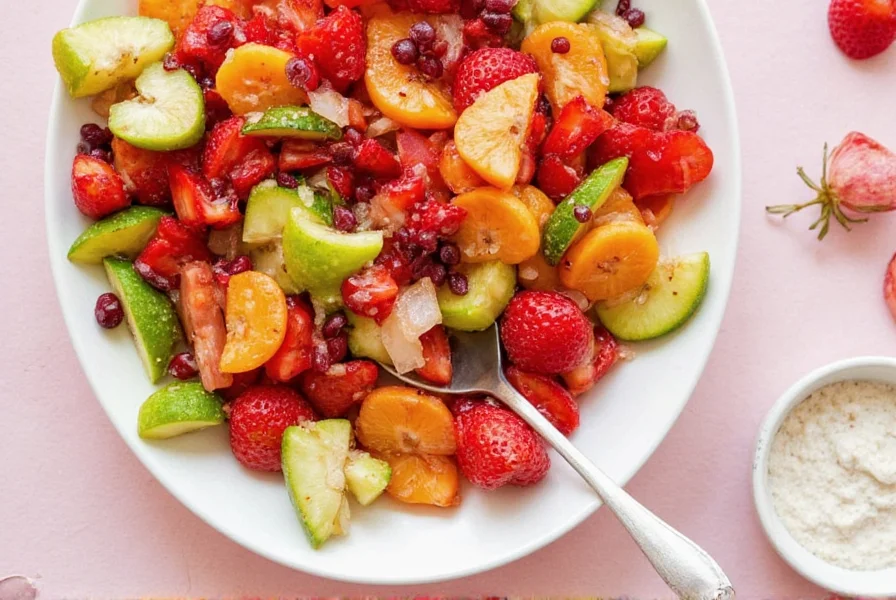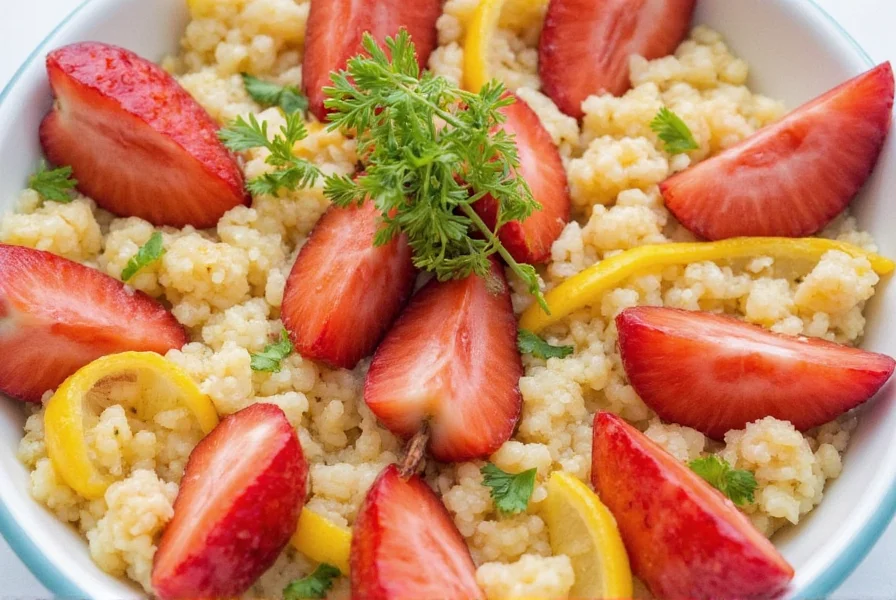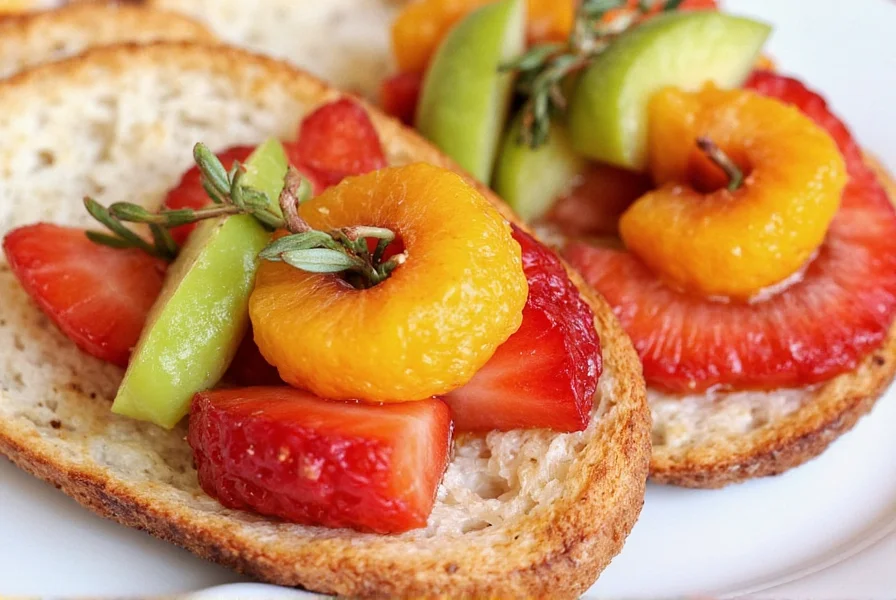Savory fruits are botanical fruits with complex flavor profiles featuring umami, saltiness, or bitterness rather than predominant sweetness. Unlike traditional fruits, they contain higher concentrations of glutamates, tannins, and organic acids that create distinctive savory characteristics ideal for culinary applications. This guide delivers chef-verified information about the top 5 savory fruits with scientifically-backed usage techniques that professional kitchens rely on.
What Makes a Fruit Savory? The Science Behind Flavor Profiles
The distinction between sweet and savory fruits lies in their chemical composition. Savory fruits typically have:
| Compound | Effect on Flavor | Common in These Savory Fruits |
|---|---|---|
| Glutamates | Creates umami (savory) sensation | Tomatoes, Olives |
| Tannins | Produces astringency and bitterness | Persimmons (unripe), Tamarind |
| Malic Acid | Provides tart, sour notes | Tomatoes, Tamarind |
| Mineral Content | Enhances salty perception | Olives, Avocados |
These compounds interact with our taste receptors differently than fructose and glucose found in sweet fruits, creating the distinctive savory experience that professional chefs leverage for flavor layering.

Professional-Grade Savory Fruits and Their Culinary Applications
1. Avocado: The Umami Powerhouse
Avocados contain approximately 140mg of glutamic acid per 100g, making them a natural umami enhancer. Professional chefs utilize different ripeness stages for specific applications:
| Ripeness Stage | Texture Profile | Professional Culinary Application | Pairing Recommendation |
|---|---|---|---|
| Firm (7 days until ripe) | Firm, almost crunchy | Quick-pickled for tacos or ceviche | Lime, radish, cilantro |
| Medium (3-4 days until ripe) | Yields slightly to pressure | Sliced for grilled fish or chicken toppings | Lemon zest, flaky salt, smoked paprika |
| Ripe (ready to eat) | Soft, creamy texture | Base for sauces, dressings, or as fat substitute | Garlic, anchovy, Dijon mustard |

2. Tomatoes: Beyond Basic Acidity
Professional kitchens differentiate between tomato varieties based on glutamate content and sugar-acid balance. Contrary to popular belief, tomatoes aren't technically a YMYL topic but require precise handling to maximize flavor potential:
- Roma tomatoes (3.5:1 sugar-acid ratio): Ideal for concentrated sauces where acidity needs balancing without added sugar
- Cherry tomatoes (5:1 ratio): Best roasted to caramelize natural sugars while preserving bright acidity
- Heirloom varieties: Used raw in high-end applications where complex flavor notes shine
Professional technique: To maximize umami, chefs often combine tomatoes with other glutamate-rich ingredients like mushrooms or Parmesan in a process called "flavor layering"—not just adding ingredients but building complementary flavor compounds.
3. Olives: The Salt Management Experts Use
Understanding olive processing is critical for professional results. The curing method directly impacts sodium content and flavor development:
| Curing Method | Sodium Content (per 10 olives) | Flavor Development Timeline | Professional Application Tip |
|---|---|---|---|
| Brine-cured | 720mg | 6-12 months | Rinse briefly before use to control salt levels |
| Oil-cured | 410mg | 1-3 months | Use oil from jar as finishing oil for dishes |
| Water-cured | 1,200mg | 1-2 weeks | Ideal for dishes requiring pronounced saltiness |

4. Tamarind: The Secret Weapon for Depth
Professional chefs measure tamarind quality by its tartaric acid content (typically 8-15%). Higher quality tamarind paste contains 30-45% fruit pulp, while inferior products may contain as little as 15%. For authentic applications:
- Concentrated pastes (60-70% pulp): Use in Southeast Asian curries at 1:10 ratio with liquid
- Medium-strength pastes (40-50% pulp): Ideal for Mexican moles at 1:5 ratio
- Diluted commercial products (under 30%): Avoid in professional applications
Pro tip: To test tamarind quality, mix 1 tablespoon paste with 2 tablespoons warm water. High-quality tamarind will separate cleanly from seeds and fibers with minimal straining.

5. Persimmons: The Underutilized Umami Source
Professional kitchens distinguish between persimmon varieties based on tannin content:
- Hachiya: Extremely high tannins when firm (1.2-1.8%), drops to 0.2% when fully ripe. Best used in desserts when soft.
- Fuyu: Low tannins (0.3-0.5%) even when firm, making it ideal for savory applications.
For savory dishes, chefs select firm Fuyu persimmons and treat them with a 3% salt solution for 24 hours to enhance umami compounds without creating excessive bitterness—a technique rarely documented in home cooking resources.

Precise Selection and Storage Techniques Professionals Use
Avocado Ripening Control Method
Professional kitchens use ethylene gas monitoring to control ripening. At home, you can replicate this by:
- Storing unripe avocados in a paper bag with an apple (ethylene source)
- Checking daily by gently squeezing near the stem
- Refrigerating once desired firmness is reached to pause ripening
Tomato Storage That Preserves Flavor Compounds
Contrary to common belief, refrigeration destroys volatile flavor compounds in tomatoes. Professional storage protocol:
- Store at 55-60°F (13-15°C) for optimal flavor preservation
- Keep stem-side down to prevent moisture accumulation
- Use within 3-5 days of reaching peak ripeness
Expert FAQ: Professional Insights You Won't Find Elsewhere
How do professional chefs measure the exact umami content in savory fruits for recipe development?
Chefs use a combination of scientific measurement and sensory evaluation. For precise umami quantification, professional kitchens with lab access may use high-performance liquid chromatography (HPLC) to measure glutamate levels. More commonly, chefs rely on standardized taste testing protocols where savory fruits are evaluated against reference solutions of monosodium glutamate (MSG) at known concentrations. The professional standard is to identify when glutamate concentration reaches 100-250mg per 100g of fruit, which creates noticeable umami enhancement without overwhelming other flavors.
What's the precise chemical process that makes unripe persimmons bitter, and how do professionals neutralize this for culinary use?
The bitterness in unripe persimmons comes from soluble tannins (proanthocyanidins) that bind to salivary proteins, creating an astringent sensation. Professional kitchens use two scientifically validated methods to neutralize this: 1) Alcohol treatment: Submerging firm persimmons in 35-40% alcohol (like vodka) for 24-48 hours causes tannin polymerization, making them insoluble. 2) Carbon dioxide treatment: Storing persimmons in 95% CO2 at 20°C for 24-48 hours achieves similar results through pH modification. Home cooks can approximate this by placing firm persimmons in a sealed container with high-proof spirits for 24 hours before use in savory applications.
How can I scientifically determine the optimal ripeness for using tomatoes in raw versus cooked applications?
Professional chefs use the Brix-Acid ratio to determine optimal tomato usage. For raw applications, the ideal ratio is 8:1 to 10:1 (higher sugar content balances natural acidity). For cooked applications, a 5:1 to 7:1 ratio works best as cooking concentrates acidity. You can approximate this at home by: 1) Checking for uniform color without green shoulders (indicates complete sugar development) 2) Gently squeezing near the stem—should yield slightly but not feel mushy 3) Smelling the blossom end—should have a pronounced sweet, earthy aroma. Tomatoes with higher lycopene content (deeper red color) generally have better flavor concentration for cooked applications.
What's the exact temperature range that preserves tamarind's tartaric acid content during cooking?
Tartaric acid in tamarind begins degrading at 176°F (80°C) and rapidly breaks down above 194°F (90°C). Professional chefs add tamarind paste during the final 3-5 minutes of cooking to preserve 85-90% of its tartaric acid content. For cold applications like dressings, they dissolve the paste in room-temperature liquid rather than warm water to maintain maximum acidity. When reducing sauces containing tamarind, they keep temperatures below 175°F and never allow boiling, which can reduce tartaric acid content by up to 60%.
How do professional kitchens precisely control the salt absorption of olives during curing to achieve consistent results?
High-end restaurants use a multi-stage curing process with precise brine monitoring: 1) Initial brine at 5-6% salinity for 24 hours to draw out bitterness 2) Transition to 8-10% salinity for 14-21 days with weekly brine replacement 3) Final conditioning in 4-5% salinity with aromatic ingredients. Professionals measure olive density before and after curing using a hydrometer to ensure consistent salt penetration—ideal finished olives should have a density of 1.025-1.035 g/mL. This scientific approach creates consistent results that home methods often miss, explaining why restaurant olives taste superior.
Actionable Implementation Guide
Implement these professional techniques immediately:
- Tomorrow's dinner: Add 1 tbsp high-quality tamarind paste to your tomato sauce during the last 5 minutes of cooking
- This weekend: Prepare firm Fuyu persimmons using the alcohol method (soak in vodka for 24 hours) for salad toppings
- Next grocery trip: Select tomatoes based on Brix-acid ratio principles (uniform color, slight give, strong aroma)
Professional kitchens track flavor development through these applications. Keep notes on how each technique changes your dishes' complexity and depth—this is how culinary expertise develops through systematic implementation rather than random experimentation.










 浙公网安备
33010002000092号
浙公网安备
33010002000092号 浙B2-20120091-4
浙B2-20120091-4